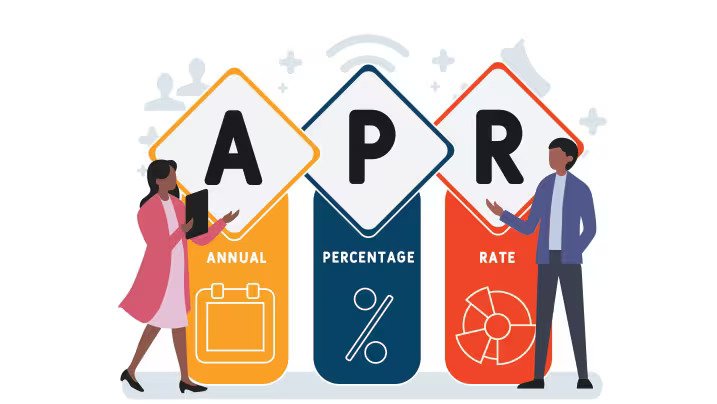Credit Card APR: Understanding Annual Percentage Rates
Credit cards play a significant role in our daily lives in personal finance. They provide convenience and flexibility, allowing us to make purchases and manage expenses. However, it is essential to understand the terms and conditions associated with credit cards, especially the Annual Percentage Rate. The APR is a crucial factor that affects the cost of borrowing and influences our financial decisions. This is one of the key discrepancies between credit and debit cards among the many cards out there.
What is APR?

To begin with, the Annual Percentage Rate represents the cost of borrowing on a credit card, expressed as an annual interest rate. It encompasses the interest charged on outstanding balances and any fees or additional costs associated with the card. In simple terms, the APR reflects the total cost of credit.
Significance of APR
Understanding the significance of APR is vital for responsible financial management. The APR determines the interest a cardholder will pay if they carry a balance on their credit card from month to month. It directly affects the cost of borrowing and can vary significantly from one credit card to another. Thus, comparing APRs when selecting a credit card is essential to ensure the most favorable terms.
Factors influencing APR
The calculation of APR involves various elements, such as the interest rate, fees, and compounding frequency. The interest rate is the primary component of the APR and comes as an annual rate. However, it is crucial to note that credit card companies may use different methods to calculate interest, such as daily or monthly compounding.
In addition to the interest rate, credit card APRs may include annual, balance transfer, and cash advance fees. These fees can significantly impact the overall cost of borrowing and should be considered when evaluating credit card offers.
Types of APR
Credit card APRs can be categorized into two main types: variable and fixed. Variable APRs are tied to an underlying benchmark, such as the prime rate, and can fluctuate over time. Changes influence them in the market and can result in variations in the interest charged on the outstanding balance.
On the other hand, fixed APRs remain constant over a specified period, providing stability in interest rates. However, it is essential to note that fixed APRs are subject to change after the initial period, often mentioned in the terms and conditions of the credit card agreement. The rate can change based on your various expenses, including entertainment, subscriptions to film and TV platforms, withdrawals from the best credit card casinos, enjoying games of luck, and more.
Impact on financial well-being
The APR has a significant impact on our financial well-being. Higher APRs translate to higher borrowing costs, increasing the interest paid on outstanding balances. If cardholders carry a balance on their credit cards and make only the minimum monthly payments, the interest charges can accumulate rapidly, leading to a cycle of debt.
Understanding the APR allows individuals to make informed decisions about credit card usage. It encourages responsible borrowing practices and prompts cardholders to pay off their balances in full each month or seek lower APR alternatives to minimize interest expenses.
Managing and reducing APR
While the credit card issuer primarily determines the APR, there are steps individuals can take to manage and reduce their APR. Maintaining a good credit score is crucial, as it demonstrates creditworthiness and can result in lower APR offers. Paying bills on time, keeping credit utilization low, and avoiding excessive debt is essential for maintaining a favorable credit score.
Cardholders can also consider negotiating with their credit card issuers for lower interest rates. In some cases, issuers may be willing to reduce the APR for customers with a good payment history or offer promotional periods with lower rates. Contacting the issuer and exploring available options is essential to potentially secure a more favorable APR.
FAQ
What is the difference between APR and interest rates on a credit card?
The interest rate on a credit card is the percentage of the outstanding balance charged as interest. On the other hand, the Annual Percentage Rate includes the interest rate and any additional fees and costs associated with the card.
How does a high APR affect my credit card debt?
A high APR can significantly impact your credit card debt. You will get a higher interest rate on the outstanding balances, leading to increased interest expenses.
Can I negotiate a lower APR with my credit card issuer?
It is possible to negotiate a lower APR with your credit card issuer. You may have more leverage in negotiating if you have a good payment history and a solid credit score.
Conclusion
In conclusion, understanding the concept of Credit Card APR is vital for responsible financial management. The APR represents the cost of borrowing a credit card and affects the overall cost of credit.

















